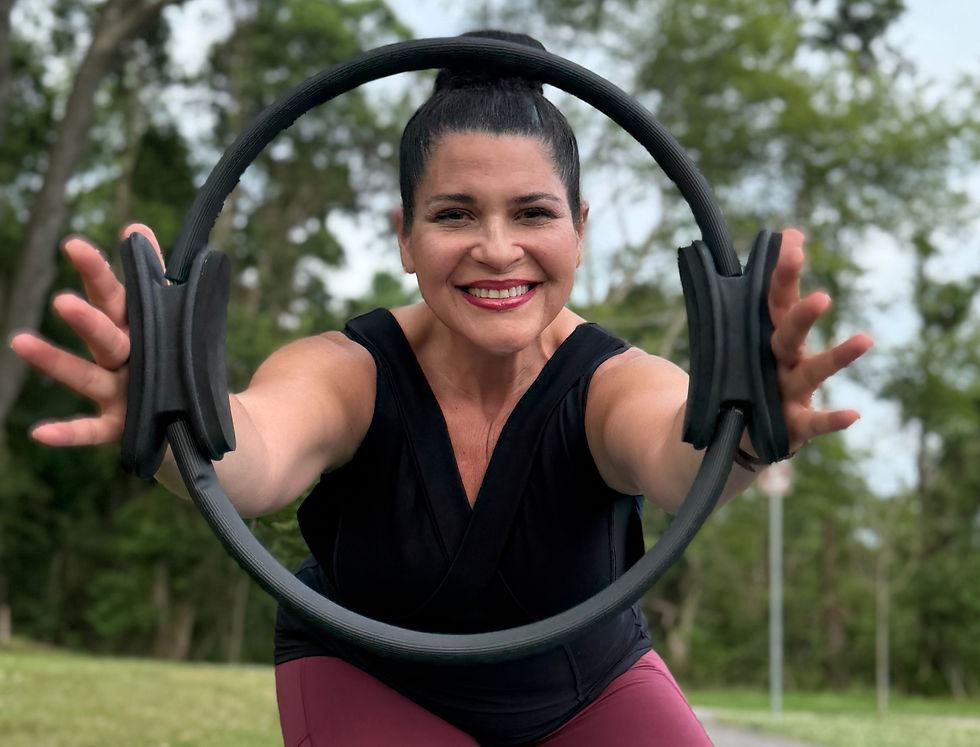How To Find Quality Activewear for Fuller Busts
- K. Poirier

- Sep 1
- 4 min read
Embrago Founder Karen Poirier talks with Elizabeth Joy of @ConsciousStyle
Excerpted from "How do you spot a quality garment? I asked 9 professionals to find out" by Elizabeth Joy on the @ConsciousStyle Substack.

One of the key elements of slow fashion is quality — in fact, we talk about the importance of quality ad nauseam in this space!
But just like the word sustainable, there are a lot of different interpretations of the word — and a good dose of greenwashing — which can cause confusion.
Quality isn't necessarily as simple as price or brand name.
Part of the challenge is that quality isn't one simple checkbox — it involves dozens of seemingly minor decisions along the design and production process.
The long and short of it is that defining and identifying quality is complex.
That's why I turned to the professionals to ask them how we can spot a quality garment. Because who better to ask about quality than the people who are behind designing and producing those garments?
So I asked our Conscious Fashion Collective community filled with fashion designers, product developers, and brand founders with decades of collective firsthand experience — what is quality? How can we identify it? What do you wish shoppers knew about quality?
Nine professionals sent in responses for the respective categories they specialize in. In this guide you'll find ways to determine quality for intimate apparel, denim, activewear, sweaters, dresses and other apparel, next-gen material garments, and even latex.
Let's get into it!
Karen Poirier | Embrago
Karen is the founder of Embrago (pronounced em-BRA-go), an activewear brand for full bust, midsize, plus size, and menopausal bodies.
Within activewear, what are the most important indicators of true quality?
The true indicators of quality for any garment are its fabric and construction.
For activewear specifically, it’s also important to evaluate the quality of a garment by its ability to provide support that doesn’t interfere with your ability to breathe and move. So activewear should be judged by an additional array of features.
Fabrics: most mainstream activewear is made of synthetic, chemically-treated fabrics, based on the misconceived idea that seamless design and moisture-wicking materials are the better quality — not always!
Synthetic fabrics vary in quality but generally are not breathable, can expose you to toxins, irritate the skin, and trap odor-causing bacteria.
Natural fabrics are not common in activewear, but they have their advantages.
For example, cotton and wool are naturally odor-resistant and durable, so they can be worn more frequently, even multiple times while sweating without smelling or needing a wash. There are also naturally anti-microbial natural fibers.
Construction: The reality is, for the majority of women — and in the U.S. that means an average size of 14 and bra size of 34DD — seamless construction does not provide the necessary support and is actually less comfortable.
Without seams, the “built in support” touted by most activewear consists of either tight compression of the ribcage or constrictive and irritating chest bands and rigid nylon straps. For women with curves, the most important thing to remember is that seams are your friend.
What kinds of decisions during design or production most directly impact the longevity of activewear?
Most mainstream and fast fashion brands rely on selling “more and new”. They favor simpler designs, standard scaling, and easy construction (fewer pattern pieces, fewer seams, fewer steps) and less technical designs that allow for larger tolerances in production.
That translates to less attention to fit (especially for curves) as well as less accommodation of non-standard bodies. Larger tolerances means sizing can be inconsistent.
If you were educating a consumer on how to feel or examine activewear to determine quality, what would you tell them to look for?
I'd say to examine the fabric content first, and avoid anything that's 100% synthetic, or that promises performance based on chemicals or coatings. If it feels like a plastic bag or a raincoat: avoid!
With natural fibers, examine the weight and quality of the fabric, and “hand feel”. Generally the fabric should feel strong, smooth, and consistent (not rough, hard, scratchy or paper-y).
Then turn it inside out and examine the garment on the inside — look for covered seams, or with flatlock seams, examine whether the edges have been cut precisely and cleanly, and if seams are straight and symmetrical.
Run your finger over the threads of the seams and see how they feel. They should feel smooth, not rough or inconsistent.

And check the bust support: are the cups seamed to shape and support? Or is the front bust panel all one piece of fabric? (This means you’ll have a uniboob!) Are there foam cups or inserts and an elastic band under the bust? These will cause extra sweating, friction, chafing, smooshing, and will trap moisture against your body.
If there are underwires, they should not rest on your breast tissue, and they should be securely covered with extra padding at the ends to avoid poking and/or break-through.
Read the complete article, "How do you spot a quality garment? I asked 9 professionals to find out".


